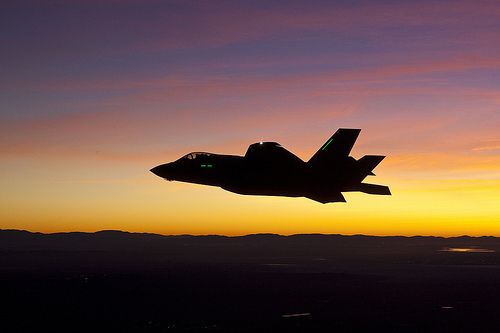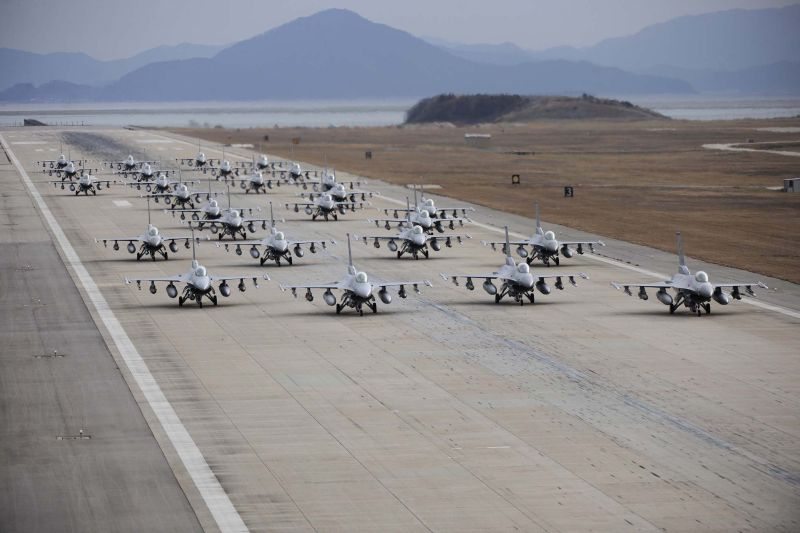The United States Air Force (USAF) variant of Lockheed Martin’s F-35 will likely fail to meet two of the Korean Air Force’s key requirements — the ability to carry weapons externally and fly at Mach 1.6 (1,930 kilometers per hour) or faster, an industry insider said Tuesday.
He pointed out that the Korean military has clearly outlined the two key features as compulsory requirements in its request for proposal (RFP) released Jan. 30.
“The maximum speed of the F-35 Lightning II, which is still under development, is Mach 1.6, the bare minimum the Air Force has stated as a mandatory requirement,” the insider familiar with the RFP said.
“The question is whether Lockheed Martin’s F-35 can prove itself to fly at such an ideal speed as advertised when a team of Air Force pilots test fly the aircraft later this year.”
The Air Force is scheduled to carry out testing and evaluations on the F-35 and its two rivals, Boeing’s F-15 Silent Eagle and EADS’s Typhoon, from June through September before announcing its selection in October.
The winner of the FX-III project, the third and final phase of Korea’s advanced fighter jet procurement project, will deliver 60 high-end aircraft from 2016 for around 8.29 trillion won ($7.26 billion).
The industry source said the F-35, the only fifth generation stealth aircraft offered on the market, will most likely perform worse than Lockheed Martin has assured when the Air Force checks the U.S. defense giant’s latest multirole, single-engine aircraft.
“What is certain to happen is that the U.S. government will provide assurances to the Air Force that the F-35 will be able to fly at Mach 1.6 by overcoming all of the technical glitches and development problems by the time it is delivered to Korea,” the source said.
“Eventually, this will pave the way for Lockheed Martin, the favorite choice for the U.S. government, to get away with the compulsory requirement and win the FX-III bid. All the broken promises will only cost millions of dollars in penalties.”
Another industry insider pointed out that Lockheed Martin will be unlikely to complete its envisioned development of external pods and pylons for its latest stealth aircraft in time.
“Lockheed Martin has boasted that its aircraft is capable of carrying weapons not only internally, but also externally on its six external missile pylons,” he said. “But it will be physically impossible to complete the development of the external pylons by the time the F-35 is delivered to Korea.”
Randy Howard, Lockheed Martin’s director of the Korea F-35 Campaign, also acknowledged that the external carriage may come as an option for Korea.
“Lockheed Martin did not cancel it, the U.S. government prioritized it,” Howard said, explaining why doubts have been raised over the development of the F-35’s external hard points.
“The F-35 is designed to carry weapons internally. That’s what it does, and that’s why it is stealthy.”
He argued that the F-35’s primary attribute, the ability to penetrate into the enemy’s territory without being detected, will be significantly compromised if Korea chooses to mount weapons externally.
“If you carry weapons externally, you are not stealthy. That’s not normally how you are going to operate F-35s,” he said.
He did note that if Korea insists on the F-35 to have an external carriage, his company is willing to customize it.
“It is only a question of prioritization of weapon certification,” he argued.
“If there are requirements for the external carriage of different weapons, it is not a hard thing because all of the capabilities are there.”
Other industry officials, however, refuted Howard’s claim, saying the development of external pylons not only reduces the aircraft stealth capabilities, but also requires a fundamental change in the aircraft design, which the USAF is not willing to pay for.











